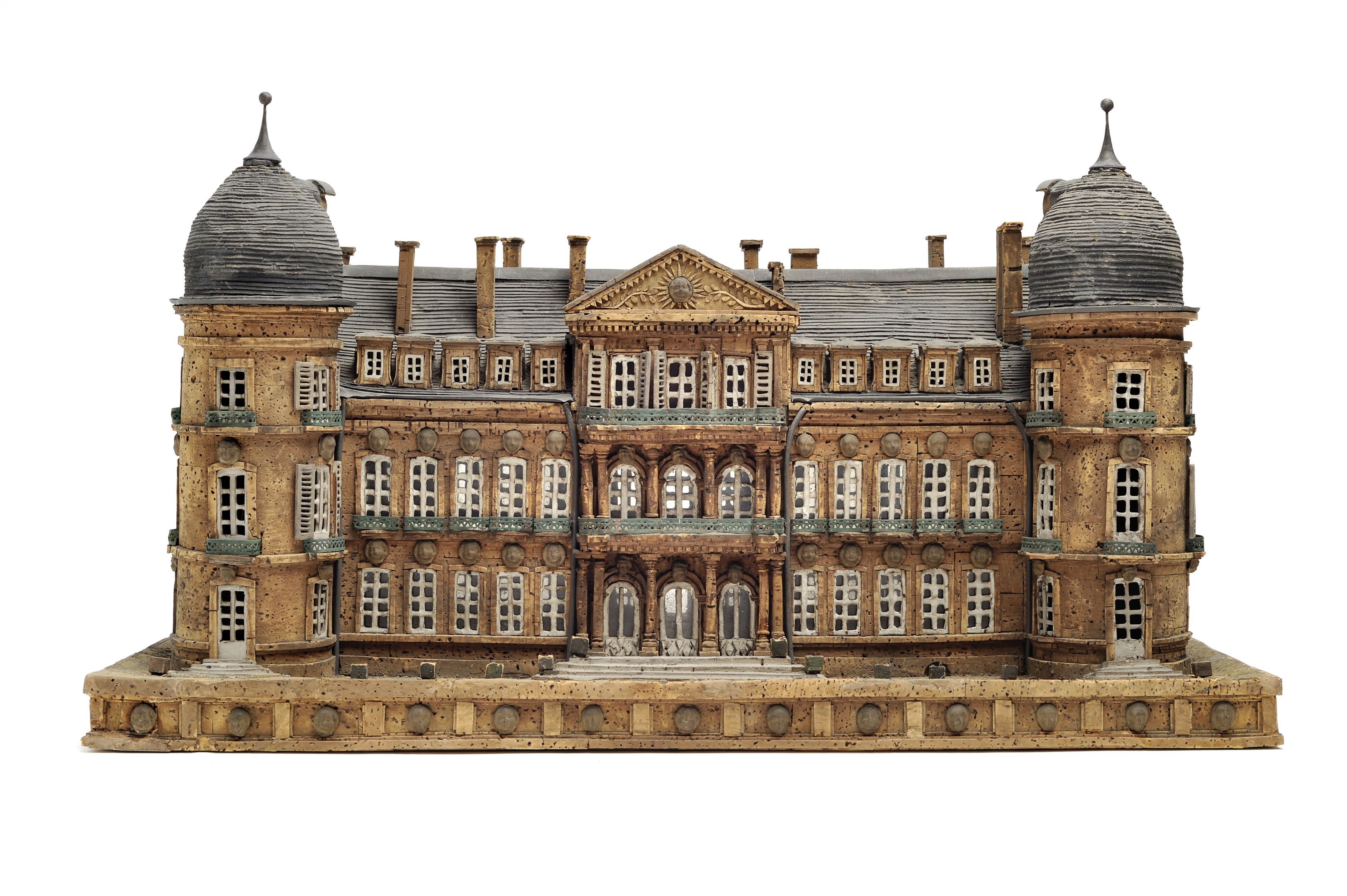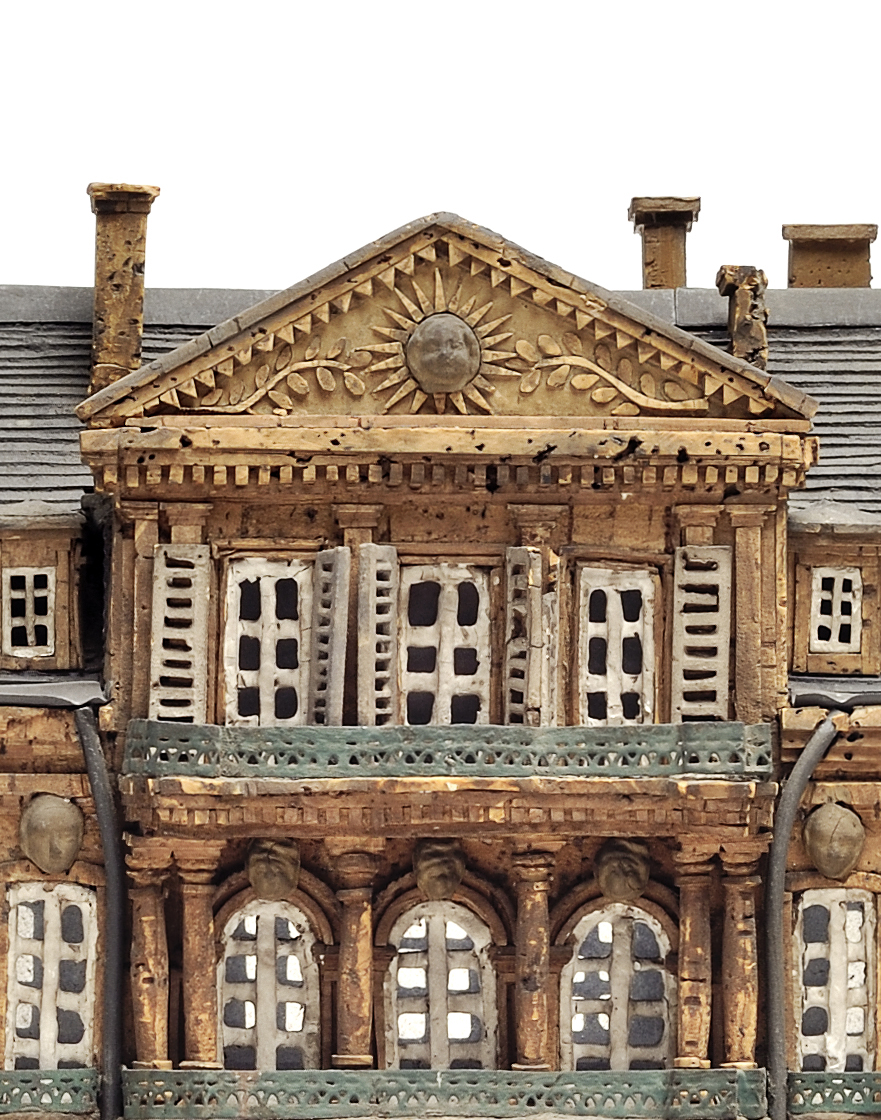Model of Château de Digoigne
French, 18. Jahrhundert
Cork, plaster, paper, glass
L 61 cm, W 30 cm, D 35 cm
Please contact us for similar objects!
The present architectural model of the Château de Digoine convinces by its design as well as its detailed craftmanship and the particularly good state of preservation. Cork models of contemporary buildings like the one present are a rarity - most phelloplastics show antique buildings and ruins, which were created as high-quality Grand Tour souvenir models for mostly princely buyers.
The technique of phelloplastic originated in Italy in the middle of the 18th century as an idea to reproduce ancient buildings in cork. The successful combination of motif and material was a decisive factor in the success of these surprisingly lifelike and often archaeologically accurate models. To this day, probably the most famous phelloplastic artist is Antonio Chichi (1743-1816): he produced fascinating models of ancient buildings and ruins in cork, which became precious souvenirs and sought-after collectables for travellers . They were displayed in collections all over Europe, where they not only served as documentation of the owner's journey, but could also fulfil a didactic function themselves.
This model is hence probably an individual commission from a privateer, made the end of the 18th century after the completion of his castle in the French region of Bourgogne-Franche-Comté. Today, the entire estate, which is still privately owned, is open to the public.





